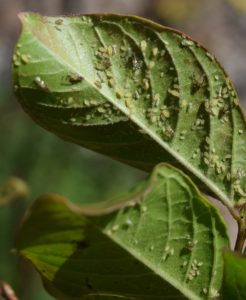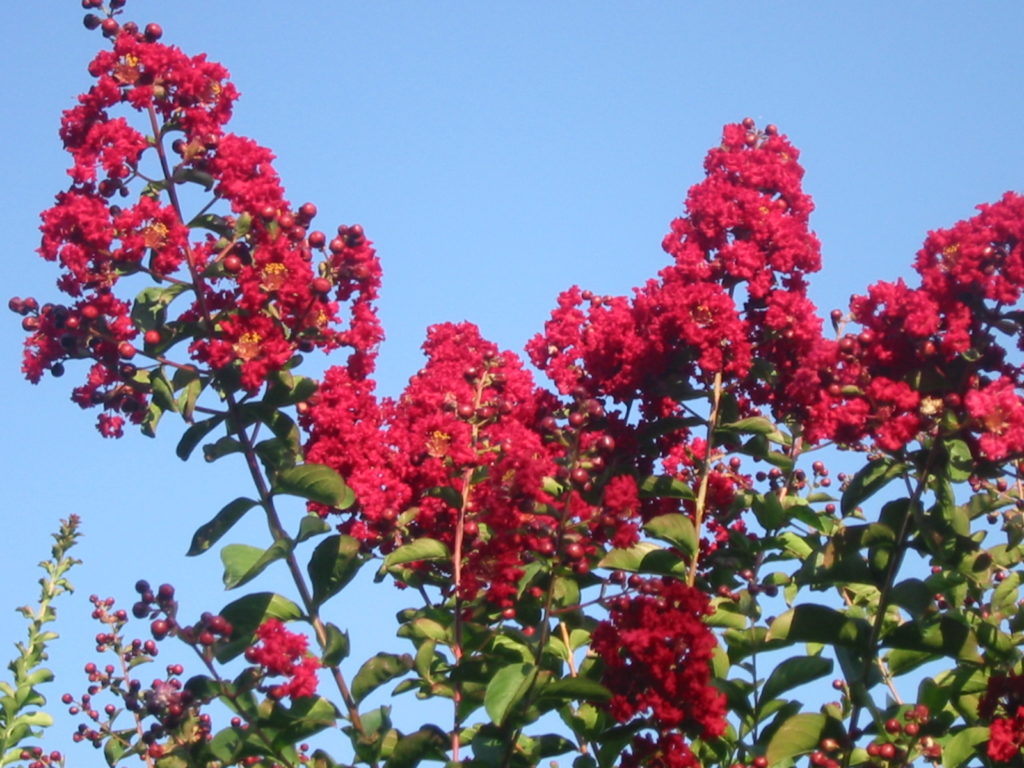It’s funny, we rarely get the question, “how do I control aphids on my Crape Myrtles?” More often, we are asked, “why are my Crape Myrtle leaves black?” Or, “what is dripping on my car from the Crape Myrtle trees?” Both of these questions refer to an infestation of an insect called a Crape Myrtle aphid. Yes, they actually are named after the tree. That, in itself, tells us something. It is one of the most common pests of Crape Myrtles in the United States. Apparently it was introduce from China with the import of Crape Myrtles long ago.

Crape Myrtle aphids are small, yellowish green insects that feed by sucking the sap from the leaves of the tree. The sap that drips from the Crape Myrtle tree is actually sap passing through the aphid as it feeds. The turgor pressure in the leaf is so great, that the sap goes right through the aphid and out the other end! When this sticky substance, called “honeydew”, is dropped on lower leaves and branches, cars, other shrubs beneath, or even sidewalks, a black fungus called Sooty Mold grows on the sugary honeydew. This makes the plant unsightly, and whatever is beneath the tree unsightly as well.
In case you are wondering, Crape Myrtle aphids are “monophagous”, meaning they are specific to Crape Myrtles and will not feed on the other plants in your yard! These pests overwinter in the egg stage. (And no, a cold winter will not diminish their numbers!) They hatch in the spring, then give birth to live young all summer long. These live young are genetically identical to the adult, which is why they are somewhat difficult to kill. When you use a pesticide, it will kill all the aphids sensitive to that pesticide. The ones left to produce more young are not sensitive to that pesticide, nor will their young be sensitive. That is why we ALTERNATE PESTICIDES, especially with aphids and their crazy way of producing young “parthenogenically”! (A big word that means without sex!)
Crape Myrtle aphids have many natural enemies, like lady beetles and their larvae, green lacewings and their larvae, hover fly maggots, parasitic wasps and certain types of fungi. If you see natural enemies on your Crape Myrtle, you may be able to skip spraying it with pesticide. Blasts of water from the hose also helps keep populations down. If you do have to use a pesticide, remember to alternate classes of pesticides in order to avoid resistant populations developing. Our knowledgeable staff will be glad to guide you on your selection.
